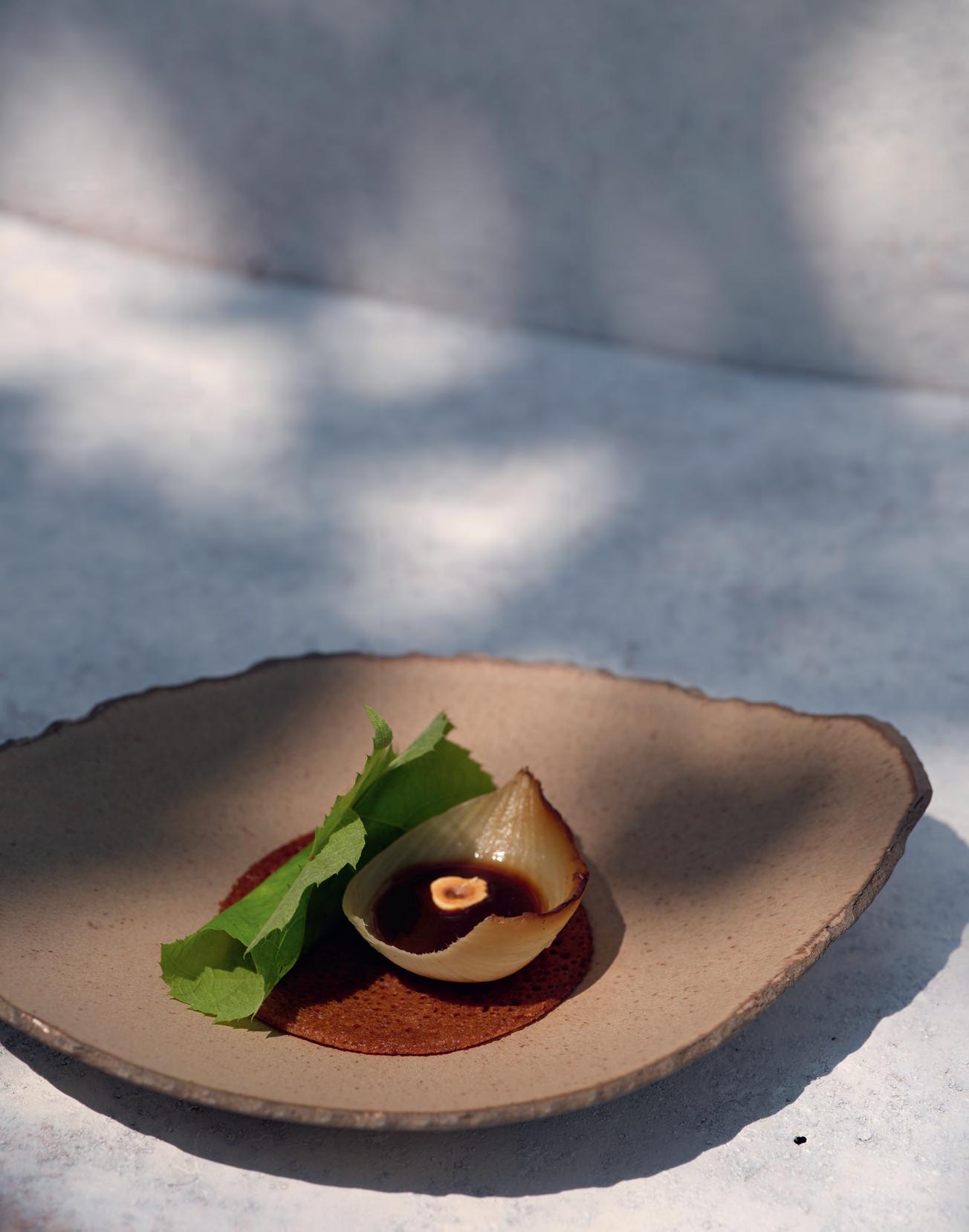
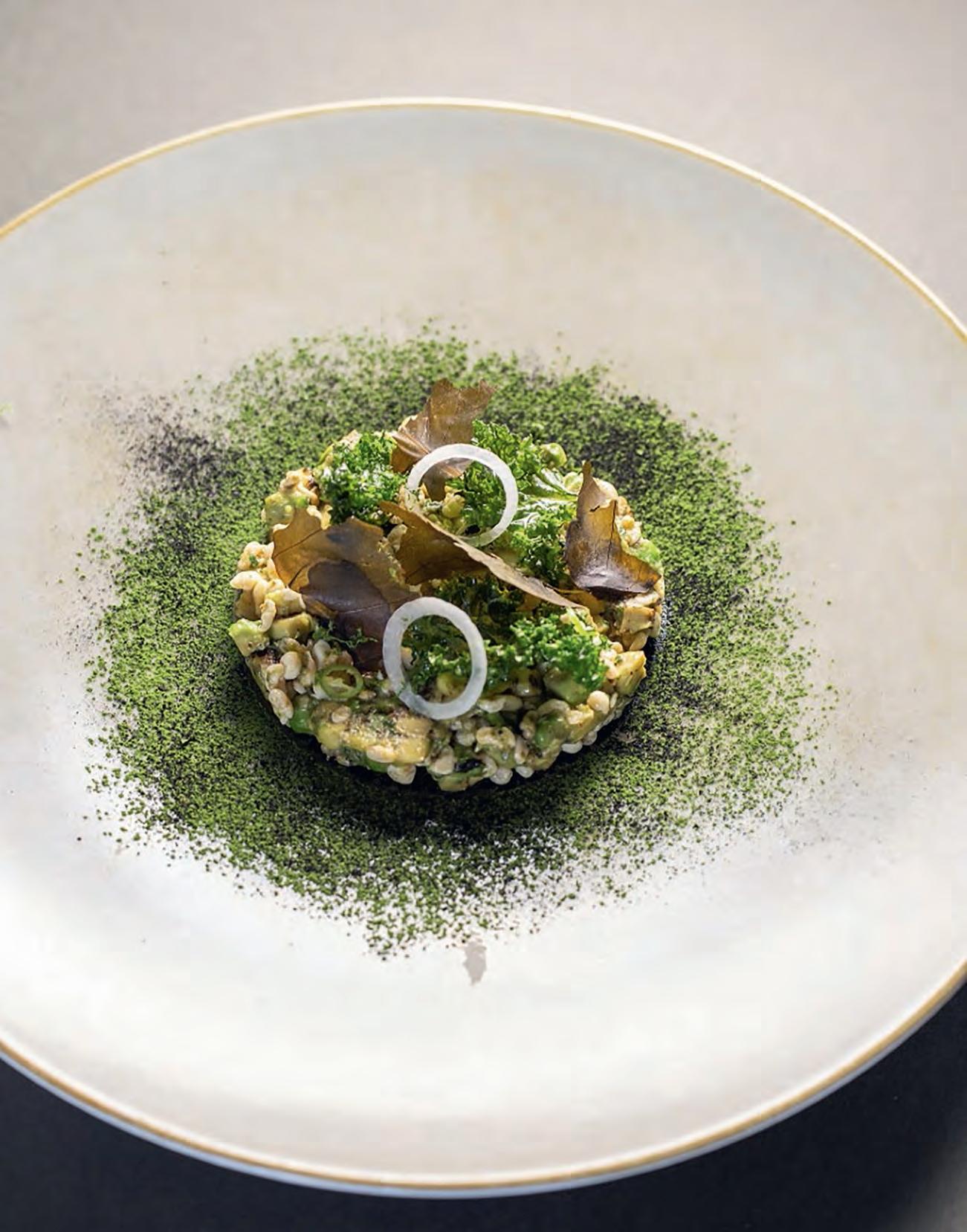



50 chefs share their secret recipes
8 Intro – Amélie Vincent
10 Massimiliano Alajmo (LE CALANDRE)
Saffron risotto with liquorice powder.
14 Josean Alija (NERUA GUGGENHEIM) Kokotxas and white asparagus omelette.
20 Juan Mari & Elena Arzak (ARZAK)
Marbled eg g – egg, zizania and mushroom marbling.
24 Garima Arora (GAA) Chaat.
28 Maksut Aşkar (NEOLOKAL)
‘Kadınbudu’ meatballs.
34 Eneko Atxa (AZURMENDI)
Teardrop peas and Iberian gel.
42 José Avillez (BELCANTO)
A Dip in the Sea.
48 Ivan & Sergey Berezutsky (FORMERLY TWINS GARDEN)
Armavir. (3D-printed potato flower with smoked lard butterfly)
52 Massimo Bottura (OSTERIA FRANCESCANA)
Five ages of Parmigiano Reg giano in different textures and at different temperatures.
56 Manu Buffara (MANU)
Cauliflower, passionfruit and peanuts.
62 Riccardo Camanini (LIDO 84)
Cacio e pepe pasta en vessie.
66 Mateu Casañas, Oriol Castro & Eduard Xatruch (DISFRUTAR)
Panchino filled with caviar and sour cream.
70 Vicky Cheng (VEA)
Roasted sea cucumber.
74 Andre Chiang (RAW AND SICHUAN MOON) ‘Memory 1997’: foie gras, truffle, chive.
78 Paul Chung (SAISON HOSPITALITY) California Urchin Gimmari.
82 Mauro Colagreco (MIRAZUR) Beetroot caviar.
88 Alexandre Couillon (LA MARINE) Oysters with lardo and squid bouillon.
92 Sang Hoon Degeimbre (L’AIR DU TEMPS) Les Jardins de Liernu.
98 Richard Ekkebus (AMBER) Aka Uni cauliflower, lobster and Daurenki Tsar Impérial caviar.
102 Adeline Grattard (YAM’TCHA) Island octopus.
106 Mehmet Gürs (MIKLA) Balık ekmek. (fried hamsi sandwich)
110 Brian Mark Hansen (SØLLERØD KRO) Lemon sole with fermented daikon sauce, parsley and Ossetra caviar.
114 Zaiyu Hasegawa (DEN) DFC. (Den fried chicken)
118 Sergio Herman (LE PRISTINE) Mussels with marinera sauce.
122 Willem Hiele (WILLEM HIELE RESTAURANT) Shrimp bisque.
126 Dan Hunter (BRAE) Parsnip and apple.
130 Supaksorn ‘Ice’ Jongsiri (SORN)
‘The sea holds the forest.’
134 Hiroyasu Kawate (FLORILÈGE)
Sustainability beef.
138 Santiago Lastra (KOL) Langoustine tacos.
144 Corey Lee (BENU)
Thousand-year-old quail’s eggs with potage and preserved ginger.
148 Ángel León (APONIENTE) Sea salad.
152 Richie Lin (MUME) MUME salad.
158 Virgilio Martínez (CENTRAL)
Amazonian fish and tucupi.
164 Dabiz Muñoz (DIVERXO) The Ages of Hake.
170 Nicolai Nørregaard (KADEAU BORNHOLM)
Raw queen scallop, ‘mussel liquorice’, horseradish cream, chewy tomatoes and blackcurrant wood oil.
176 Junghyun Park (ATOBOY)
Atoboy fried chicken.
182 Christophe Pelé (LE CLARENCE) Turbot collar with XO sauce.
186 Edoardo Pellicano (FORMERLY MAOS) Marco Polo noodles.
190 Dave Pynt (BURNT ENDS)
Western Australian marron with tobiko and kombu beurre blanc.
194 Emmanuel Renaut (FLOCONS DE SEL)
Wild mushrooms with a baked cheese crust.
198 Joan Roca (EL CELLER DE CAN ROCA)
Soil and oyster.
202 João Rodrigues (MATÉRIA)
Squid with sheep’s butter and chives.
206 Julien Royer (ODETTE)
Kampot pepper – crusted pigeon.
212 Ana Roš (HIŠA FRANKO) Where is the meat?
218 Prateek Sadhu (FORMERLY MASQUE) Unicorn Pani Puri.
222 Eyal Shani (HASALON)
The original world-famous baby cauliflower.
226 Kwok Keung Tung (THE CHAIRMAN)
Steamed flower crab with Shaoxing rice wine and chicken fat.
230 Aaron Turner (IGNI)
Fermented Dutch potatoes poached in goat milk and single-press olive oil with smoked dried brook trout roe.
234 Jorge Vallejo (QUINTONIL)
Charred avocado tartare with escamoles and Mexican herb chips.
240 Poul Andrias Ziska (KOKS)
Ræstan fisk and garnatálg.
246 Weights & liquid measures table
247 Photocredits
THE SIGNATURE DISH. A dish that symbolises in just a few mouthfuls the identity of its creator. A dish behind which hides a search, a meaning, an encounter. A dish that lays out a bit of history or a culinary philosophy on a beautifully presented plate, and that leaves us guessing until we are told its unique origin story. A dish with multiple colours, textures and flavours that honours nature and takes us on a journey to discover the inner, secret world of the chef.
My name is Amélie Vincent and I am very lucky to work in the world of gastronomy with the most creative chefs in the world. Almost ten years ago I became an official tastehunter and content creator for the World’s 50 Best, the platform that lists the best restaurants in the world. Today, I am also a TV host, consultant, journalist, and influencer.
I didn’t find my vocation by chance. As my dad once said, ‘it was guided by life, its mountains and its valleys’. As an only child, from a mixed European and Asian background, and with globetrotting parents eager to make new discoveries, I’ve had plenty of opportunities to soak up and discover diverse cultures. I remember at barely three years old being the youngest gourmet to sit at the table at Georges Blanc – three Michelin stars at the time.
Later, I visited the pagodas where my family went to pray to our ancestors, tasting the delicious dumplings made by the monks, and travelled to African villages where I discovered how to crush cassava. I followed my father to remote islands, and stepped into the roadside huts, while he was saying: ‘Choose a dish on the menu with your eyes closed, it will surely tell us something.’
So I have always bathed in this melting pot of culinary curiosity and cultural discovery. At those different tables, I dissected the flavours of course, but I also observed with great interest these animated human beings who tirelessly repeated the same gestures to feed us. The profession of chef fascinated me very early on; as a child I was in awe of the magic of the ingredients’ transformation in the kitchen, and the joy of sharing at the dinner table.
This sense of wonder for all things culinary never left me, and eventually led me to change my job as an intellectual property lawyer for the world of gastronomy. Then I discovered the work of the most creative chefs in the world, such as Virgilio Martínez and his wife Pia León and their Mater Iniciativa project, which promotes Peru’s culinary heritage and biodiversity, or chef Mehmet Gürs and anthropologist Tangor Tan, who have been searching all year long the most historic foods in Turkey to express the essence of their country.
I am grateful to have had the opportunity to meet dozens of talented chefs, who took the time to present their terroirs to me, tell me all about their sources of inspiration, and revealed the magic of nature and of human beings hidden behind their choice of ingredients or cooking techniques.
Then, on a more personal note, when faced with the adversity of life, it is these same chefs – who had by then become friends – who took care to feed me wonderful dishes, to give me back the courage to continue on my journey.
Therefore, this book is more than a collection of individual recipes. It is a tribute to my soul family, and a look back at the ten years I spent travelling the world, fascinated by the life force and passion that drives all these chefs to create so many ephemeral masterpieces. which disappear as quickly as their beauty touches us.
I would like to thank this amazing family of chefs from all over the world (who unfortunately could not all be present in this first edition) for letting me open the door to their kitchens, and invite me to join their tables and personal lives. I humbly hope this book will open another small door… One that will reveal to readers a part of the beauty and subtlety that I had the chance to experience, touch and taste along this unique initiatic journey. Because in life, as in the kitchen, transmission is key.
To my mother, this esthete who left too soon and taught me about beauty and taste, To my children, who share this fascination and curiosity
To my soul family: my dear friends in the industry, To the passion that allows us to reveal the best of ourselves, To love, nature, and the beauty of creativity,
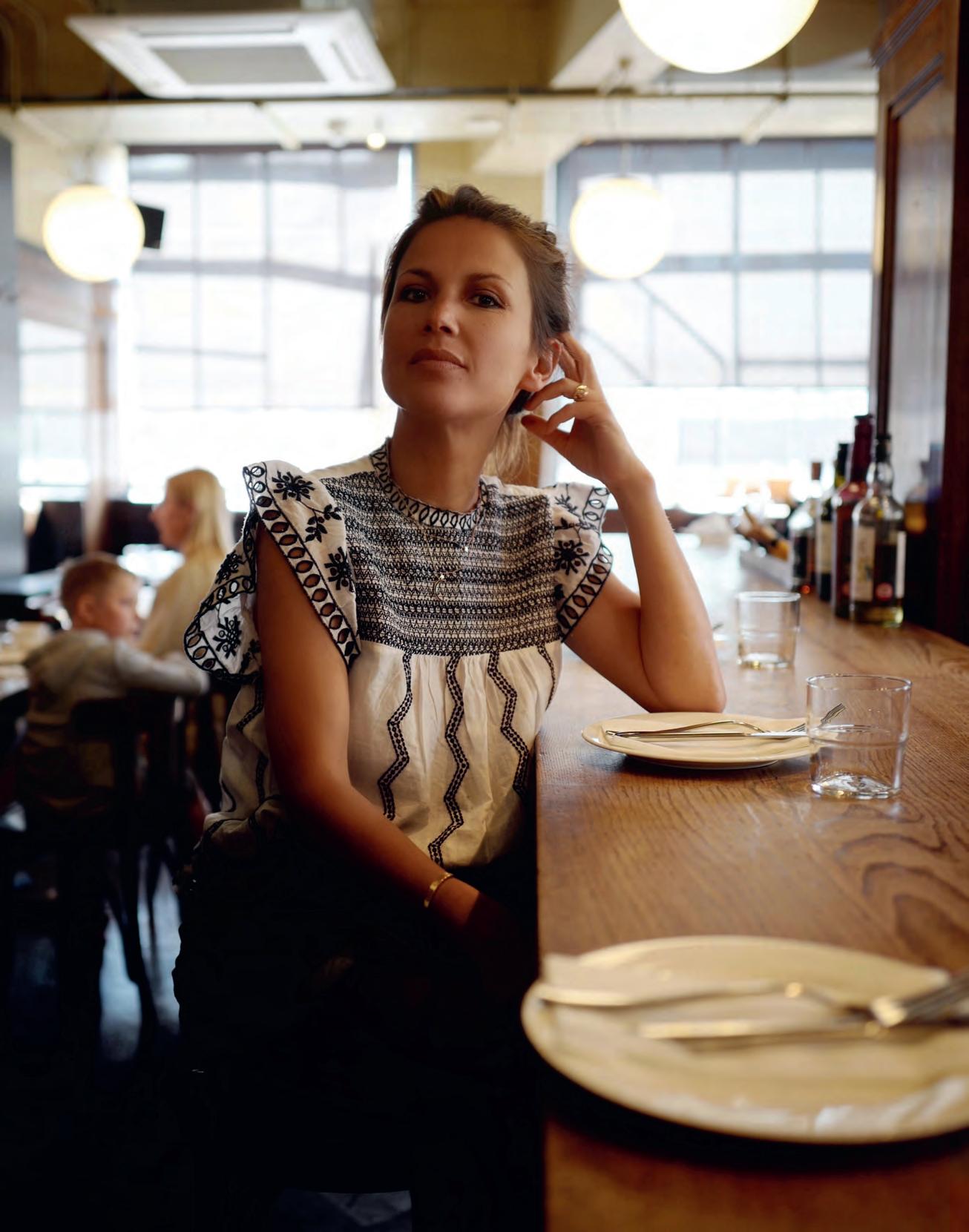
Born in Padua in 1974, Massimiliano Alajmo was born into a long line of chefs and restaurateurs. After attending a management school, Massimiliano was culinary educated in the kitchen of Alfredo Chiocchetti of Ja Navalge in Moena, Marc Veyrat of Aberge de l’Eridan in Veyrier-du-Lac and Les Près d’Eugénie in Eugénie-les-Bains. The chef took over his family’s restaurant when he was just 19, and at age 28 he became the youngest three-star Michelin chef in history.
Family is key to Alajmo, who grew up in his parents’ restaurant in Rubano, in Italy’s Veneto region, and later took it over with his equally talented brother Raffaele, a sommelier. No wonder his signature dish, saffron risotto, is dedicated to his wife Maria Pia and her home region of Calabria.
‘The root and the flower, represented by liquorice and saffron, are the most extreme parts of the plant; one low, deep and hidden, the other tall, seductive and luminous, almost like a dialogue between opposites: origin and growth, birth and rebirth,’ explains Alajmo, who is also known as Il Mozart dei Fornelli (The Mozart of the stoves) for the lightness, depth of flavour and fluidity of his cuisine. According to Alajmo, ‘the colours of the risotto reflect the contrast, at the same time maintaining a hidden truth, while the dark powder manifests golden reflections only in the presence of light.’
The sunshine-coloured risotto is usually served as a first course in a tasting menu (with other classics such as cuttlefish cappuccino, scorched bone marrow with sea urchin, and almond mozzarella), but has also been served in different variations over the years, including a risotto ‘Passi d’Oro’ inspired by Roberto Barni’s sculpture at the Uffizi gallery. It is best enjoyed sitting at one of Le Calandre’s wooden tables, sculpted from 300-year-old trees, but if you decide to make it yourself and can’t find liquorice powder, Alajmo suggests replacing it with a few drops of blood orange reduction, orange zest and chopped parsley.
The Alajmo empire currently includes a bistro and a deli in Rubano, as well as many establishments in Venice, from St Mark’s Square to La Certosa island, and stretches far beyond the Venetian shores, with Sesamo in Marrakesh and Caffè Stern in Paris. You can also purchase the perfect riso carnaroli and olive oil from Alajmo’s online boutique. Ingredienti are the crux of Alajmo’s cooking. As he once said: ‘There is no truth beyond that contained in the ingredients. My goal is to reach or penetrate the essence of the ingredient, and respond with respect and therefore lightness.’
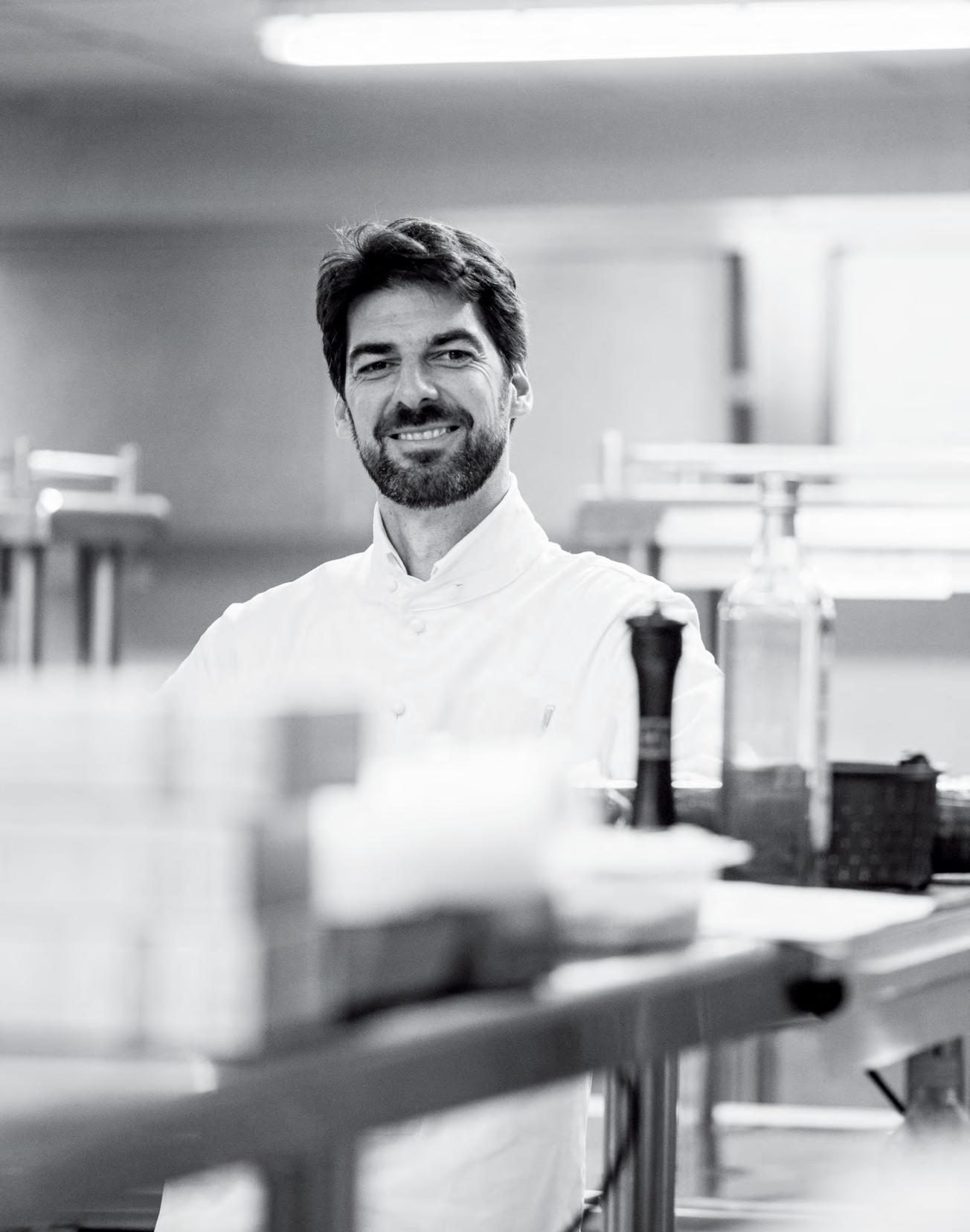
50g water, boiled
2g saffron powder
FOR THE RISOTTO
320g Carnaroli rice
12g extra-virgin olive oil
70g dry white wine
a pinch of salt
1g saffron threads
30g saffron reduction
2L chicken broth
60g butter
80g grated Parmigiano Reggiano
5g fresh lemon juice
2g dark liquorice powder
a pinch of caster sugar
Dissolve the saffron in the boiling water.
Toast the rice in a wide saucepan with the olive oil. Add the wine and allow to evaporate. Add the pinch of salt and saffron threads, then continue cooking, adding first 30g of the saffron reduction and then the broth, a ladle at a time. Once cooked, remove from the heat and briskly stir in the butter, Parmigiano Reggiano and lemon juice. Emulsify with a little broth.
TO PLATE
Ladle onto a flat plate, allowing the risotto to spread. Sprinkle with the liquorice powder and garnish with a few drops and brush strokes of the saffron reduction.
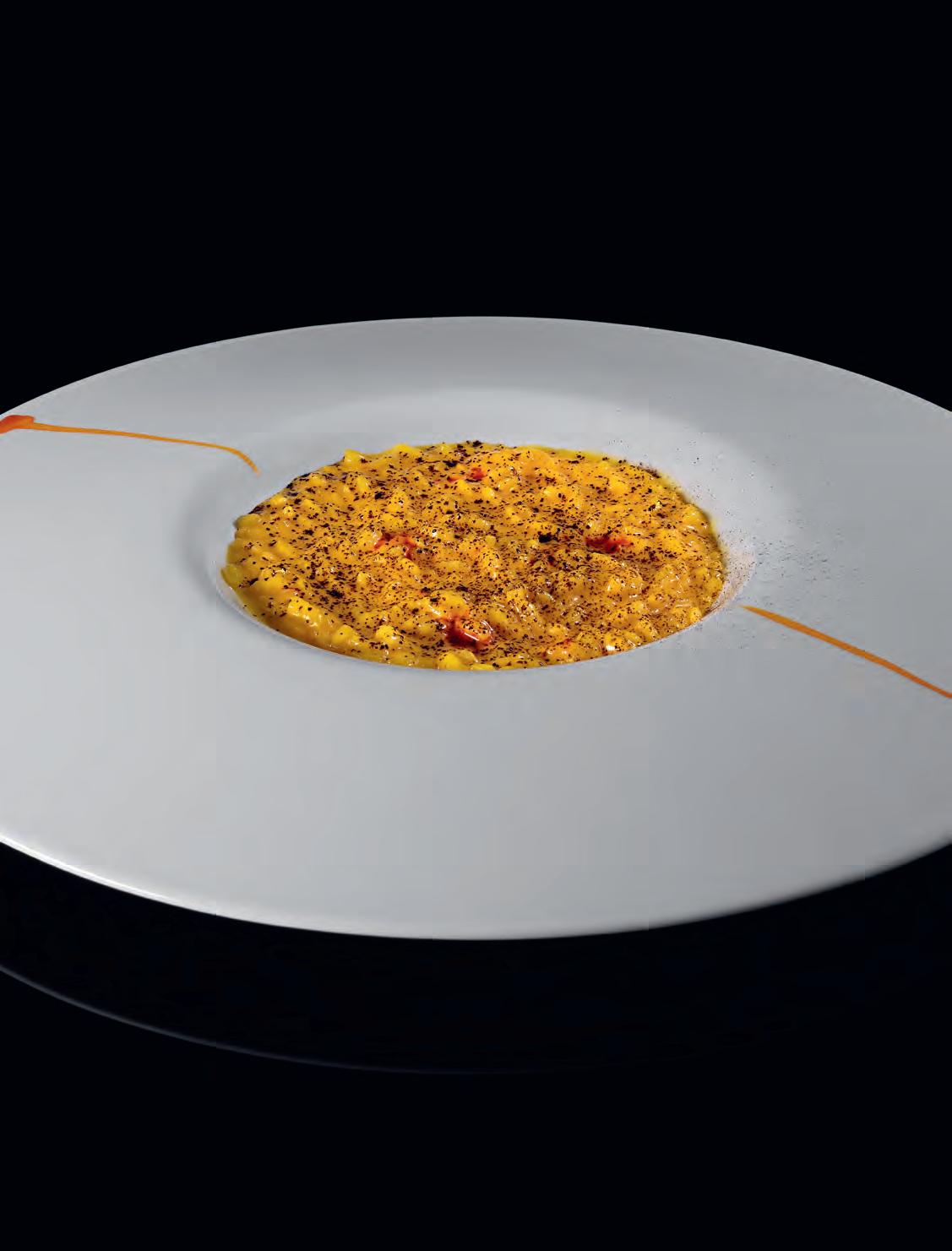
Born in Lisbon in 1979, Avillez is a well-known face on Portuguese TV for his cooking show and cookbooks. His food empire harbours a cluster of restaurants in Lisbon and Porto, including 2 stars Belcanto, which he opened in 2012.
‘This dish talks about my Portuguese roots and childhood,’ explains Avillez, who grew up between the ocean and a pine forest in Cascais, a charming seaside town near Lisbon. ‘Because the sea is so important to me, I wanted to capture the feeling of taking a dip in its water. “Dip in the Sea” is one of my first signature dishes; it captures the purest sea flavour and pays tribute to the amazing Portuguese fish. I’ve kept it throughout the years because for me this dish reflects a kind of perfection: it is subtle, elegant and unique.’
Avillez, who started cooking at home at age seven (‘I used to bake with my sister, selling the cakes to family, friends and neighbours’), learned his trade at many fine-dining restaurants around the world, including Ferran Adrià’s elBulli. ‘I’ve been influenced by all the great chefs I worked with and learned from, especially Ferran Adrià, who played a life-changing role in my career,’ explains Avillez. ‘He taught me how to think and break down the mental barriers I faced.’ Today he follows a simple set of guiding principles – flavour is the most important thing; technique serves the product; the ingredients should be carefully chosen to create incredibly poetic dishes.
Avillez’s other great influence is Portuguese cuisine. ‘The differentiating aspect of Portuguese cuisine has to do with the cultural exchanges that happened during our Age of Discoveries,’ he explains. ‘For this reason, our cuisine has some fusion and influences from Africa and Asia. The Portuguese were responsible for the first globalisation phenomenon, all these influences being possible thanks to our spirit of openness to the world. My cuisine intends to reflect that openness.’
Avillez stood out in the fine-dining scene in 2018, when he took on the role of executive chef at Lisbon’s landmark restaurant Tavares, where he won his first Michelin star only a year later. The Belcanto adventure started in 2012 and today the leading Portuguese chef has several restaurants in Lisbon, Cascais and Porto, as well as one in Dubai, each one expressing his vision through a different concept.
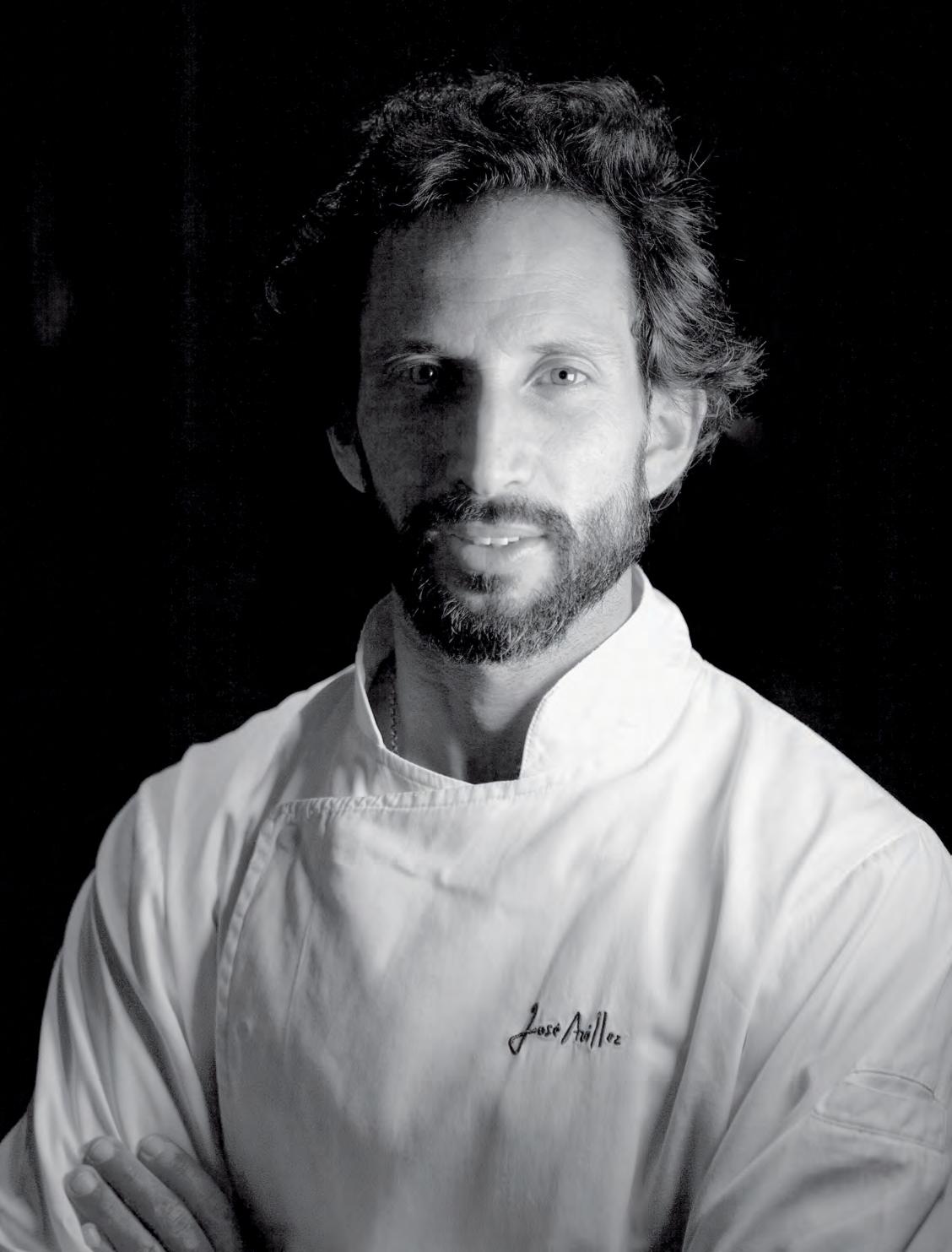
4 sea bass fillets, deboned, with skin, 180g each
650g mussels
325g cockles
650g razor clams
sea salt
150ml mineral water
Pack each sea bass fillet in a sous-vide plastic bag and seal it. Set aside in the refrigerator.
MUSSELS
Wash the mussels under running water., then, with a table knife, scrape the mussels to remove any dirt from the shell. Each time you wash the mussels under running water, follow this up by submerging them in a 2-per-cent brine (1 litre of water per 20g of salt). Lay the mussels in a baking tray and add the mineral water, and cook for 10–12 minutes in a steam oven preheated to 100 ºC (210 ºF). Remove the tray from the oven, transfer the mussels to another tray and set the water aside.
Keep the mussels on the tray for later use.
COCKLES
Wash all the cockles under running water. Put them it in a medium-sized saucepan with boiling water, and cook them for 13 seconds. Using a slotted spoon, immediately transfer the cockles to a tray, placing in the refrigerator to cool. Once cooled, remove the cockles from their shells and place them in a tray in a cold bain-marie while you prepare them. Cut the cockles in half and discard their stomachs. Scrape the sand out of their heads. Set aside the clean cockles in a cup in the refrigerator.
Place all the razor clams in medium-sized vacuum bags (20–25 clams per bag), add a little brine to each bag and then seal them, ensuring you have removed all the air. In a large pan with boiling water and room for all the bags, cook the razor clams for 2 minutes. Take the bags out of the water and immediately place them in a container with iced water, so that they quickly cool (approx. 5–10 minutes). Discard the cooking water. Take the bags out of the iced water and open them. Strain the razor clams and place them in a cold bain-marie while you prepare them. Save some of the cooking juices. One by one, open the razor clams, pull the heads out without removing the stomach from the case, and push the body against the razor blade to cut the body, taking care not to cut the stomach. Discard the shell and stomach.
Set the razor clams aside in the cold, inside a lidded plastic container of suitable size, covered with some of the razor clam juices.
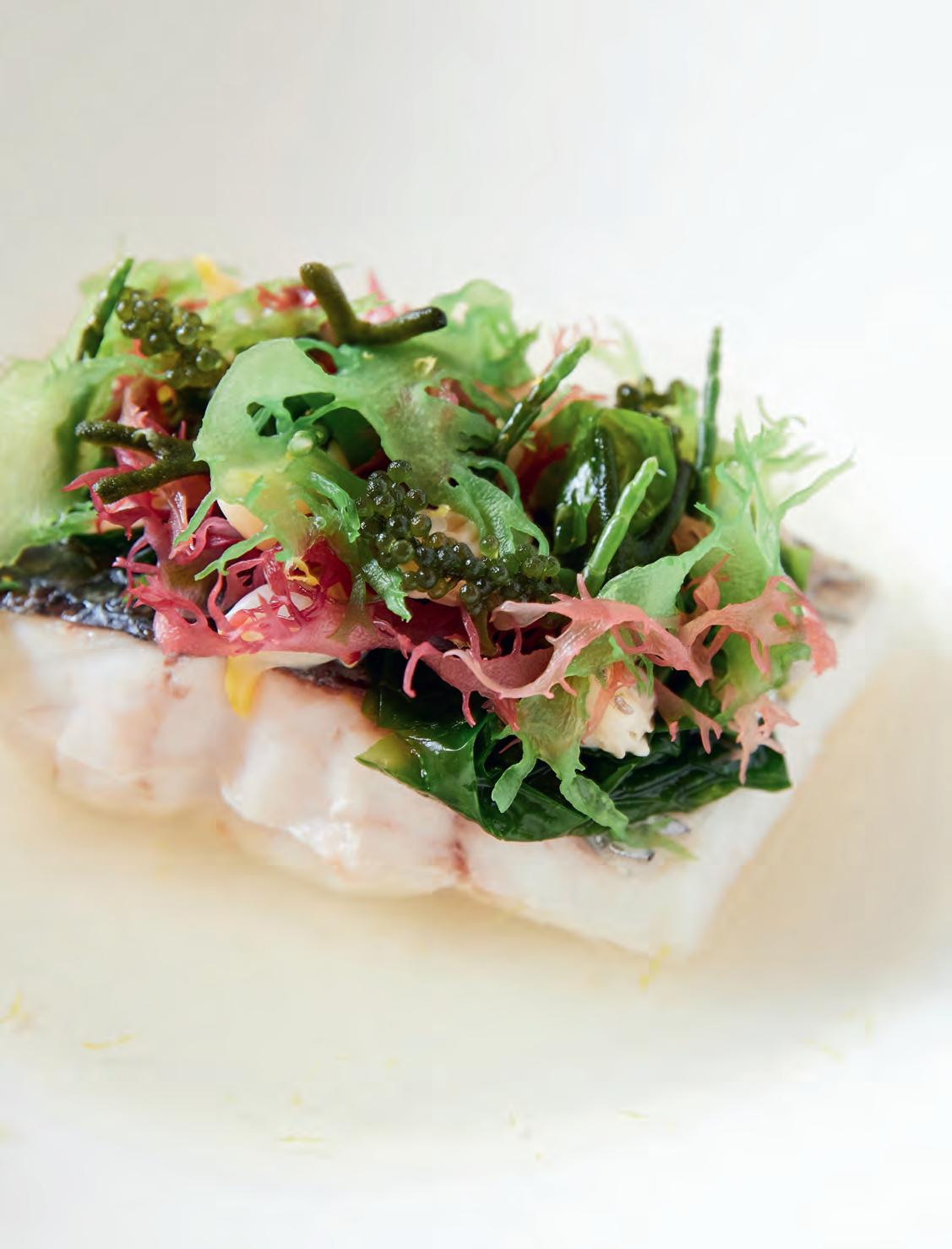
Born in 1973 in Northern Italy, Riccardo Camanini trained with Raymond Blanc and Hélène Darroze before opening his own restaurant at age 40 with the help of his brother Giancarlo. Lido 84, on Lake Garda, is now a must-visit gourmet destination.
As a child growing up in a small village near Bergamo, Lombardy, Riccardo Camanini was happier on the football pitch than in the kitchen. But he fell in love with the world of fine dining at age 19 after a stint with legendary Italian chef Gualtiero Marchesi. Since then, the chef has immersed himself in the art and history of gastronomy, as his signature dish exemplifies.
‘The idea was born while reading De re Coquinaria (Of Culinary Matters), a book by Marcus Gavius Apicius and probably the first recipe book of which we have historical knowledge. Apicius was a wealthy Roman merchant, who lived during the time of Emperor Tiberius,’ says Camanini. ‘He wrote that the food was stored inside pig bladders to facilitate transportation from one colony to another. From this, various thoughts began to emerge in my mind, several references to preparations and gestures, and possible usage of the bladder. So I thought: why not try it with pasta?’
Camanini’s cacio e pepe en vessie is ‘a cultural bridge between Italy and Scottish and German gastronomic preparations, where internal organs are used for cooking food.’ Created after much experimentation, it’s a mash-up of Rome’s simple but iconic cacio e pepe pasta (its cheese and black pepper sauce has just enough liquid to steam the pasta) and the traditional cooking method ‘en vessie’, (in a bladder), made famous by the Scots and their haggis. The result is a showstopping dish for four that arrives at the table as a large inflated ball, which is then punctured by a server to reveal a portion of steaming rigatoni, perfectly cooked and coated in the pepper and cheese sauce.
The dining experience is both theatrical and artisanal – and possibly one of the most Instagrammed in Italy. Yet this is not about a polished, seamless experience: ‘It’s like when you buy shoes from an artisan,’ Camanini has said, ‘you find these imperfections because they’re handmade. Cuisines need to be like this.’ With one foot in the past and one foot in the future, Camanini’s signature dish is certainly one for the history books.
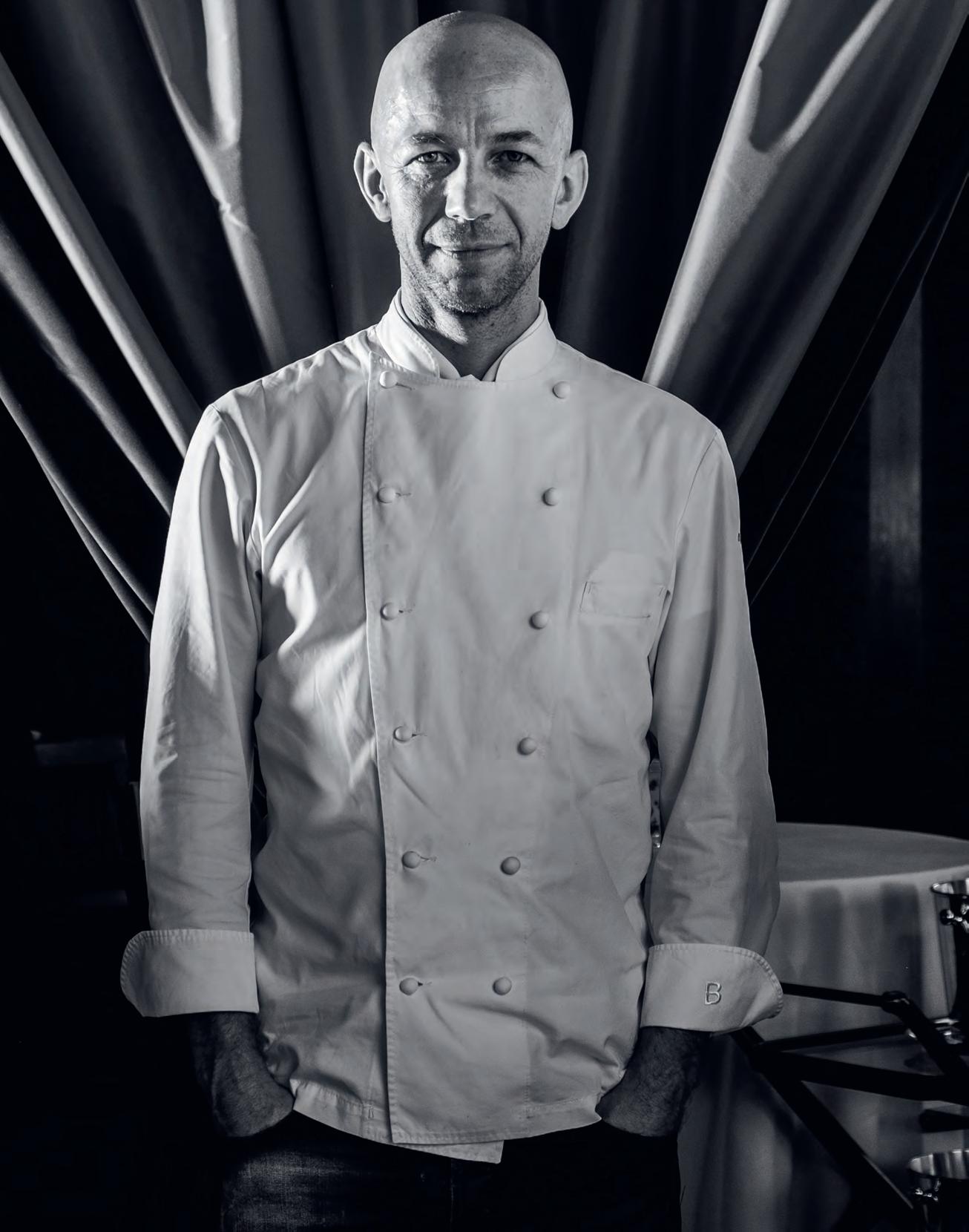
1 dehydrated pig’s bladder
300g rigatoni (Riccardo recommends using the Felicetti brand as it is resilient enough to withstand the 30 minutes’ cooking time)
135g pecorino nero (aged black-rind variety), grated
90g extra-virgin olive oil
3g black pepper, freshly cracked
12g salt (Riccardo uses Guérande)
Soak the dehydrated pig’s bladder in cold water for about 10 days, changing the water daily. When the bladder is adequately hydrated, insert the other ingredients into it using a funnel, then firmly secure the bladder opening with kitchen twine.
Cook the stuffed bladder in a large pan of boiling water, being sure to keep it submerged in the water and shaking it occasionally to mix the pasta inside. Cook for 30 minutes. TO PLATE
Serve in front of guests by cutting open the bladder with a sharp knife and spooning the rigatoni onto plates.
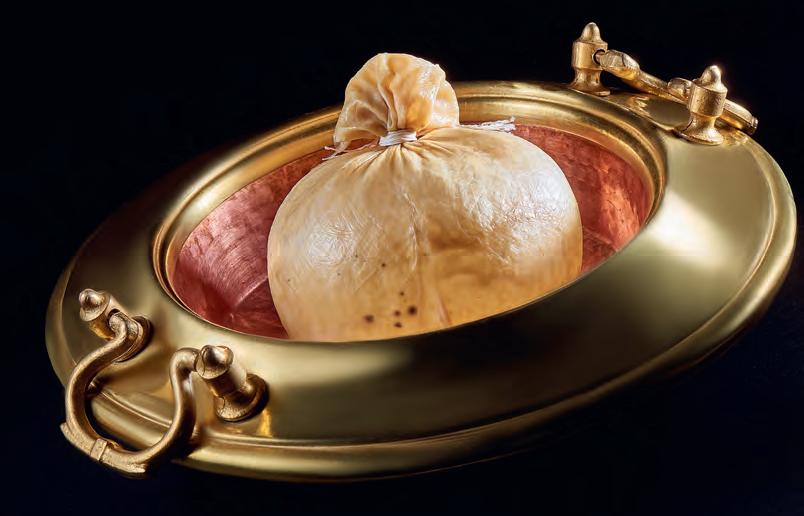
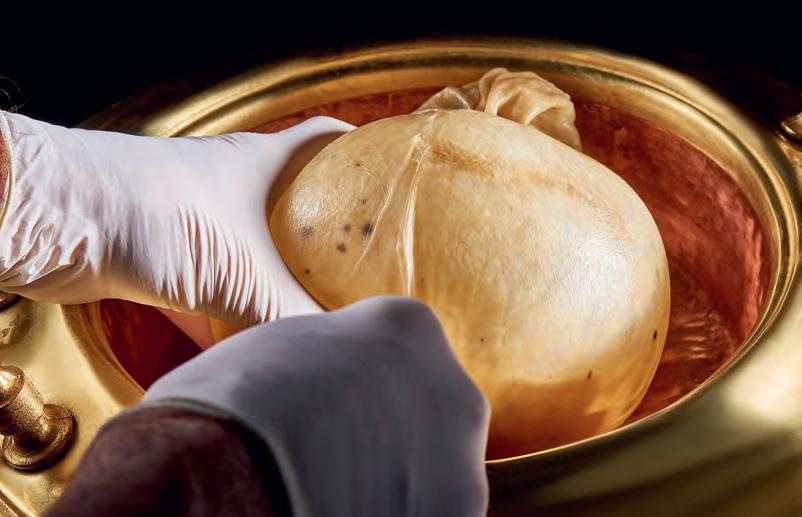

www.lannoo.com
Sign up to our newsletter for updates on our latest publications on art, interior design, food & travel, photography and fashion, as well as exclusive offers and events.
CONCEPT
Amélie Vincent (@thefoodalist)
TEXTS
Léa Teuscher
Amélie Vincent
COPY EDITING
First Edition Translations
Melanie Shapiro
BOOK DESIGN
Katrien Van De Steene (Whitespray)
COVER IMAGE
Parsnip and apple, signature dish
Dan Hunter (Brae), © Brae
If you have any questions or comments about the material in this book, please do not hesitate to contact our editorial team: art@lannoo.com
© Lannoo Publishers, Belgium, 2023
D/2023/45/6 - NUR: 440/500
ISBN 9789401488303
All rights reserved. No part of this publication may be reproduced or transmitted in any form or by any means, electronic or mechanical, including photocopy, recording or any other information storage and retrieval system, without prior permission in writing from the publisher.
Every effort has been made to trace copyright holders. If, however, you feel that you have inadvertently been overlooked, please contact the publishers.